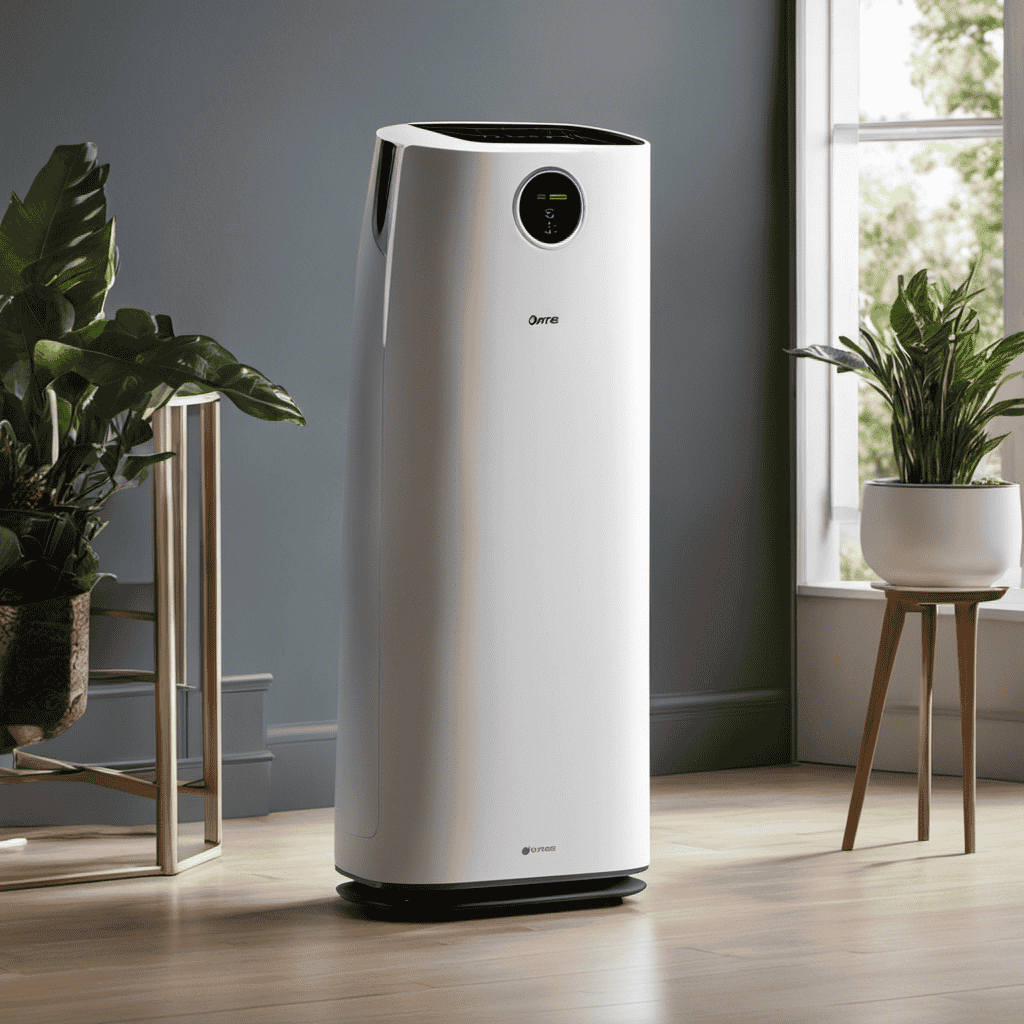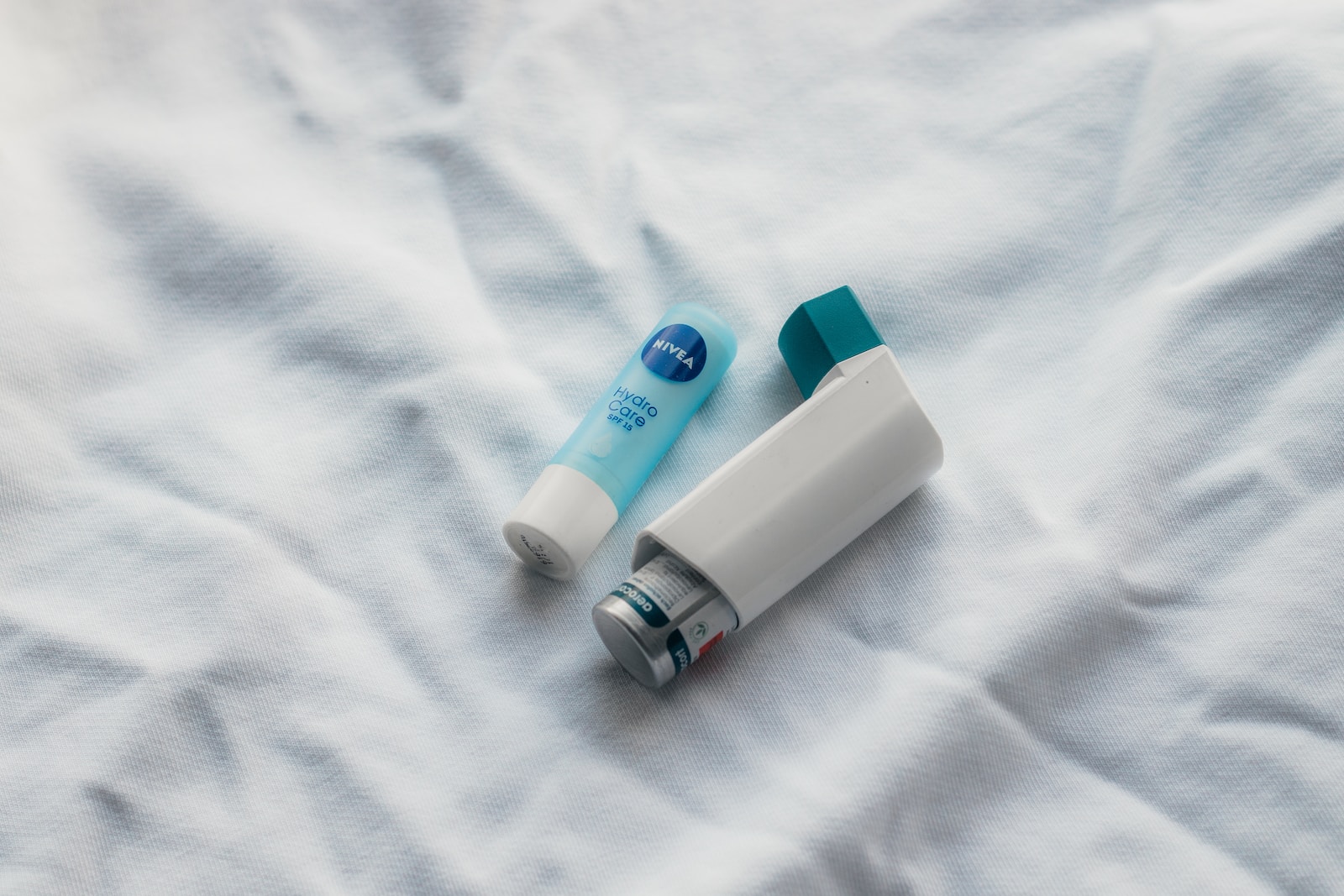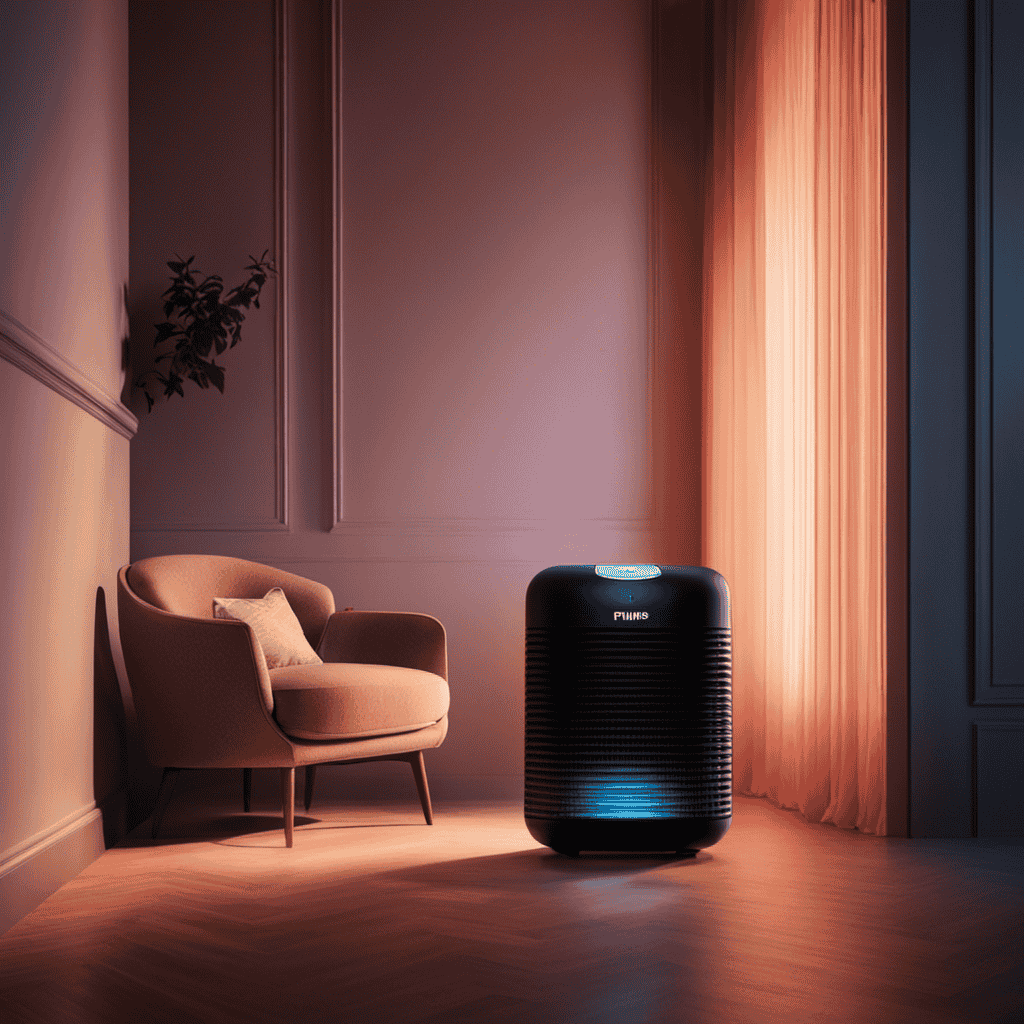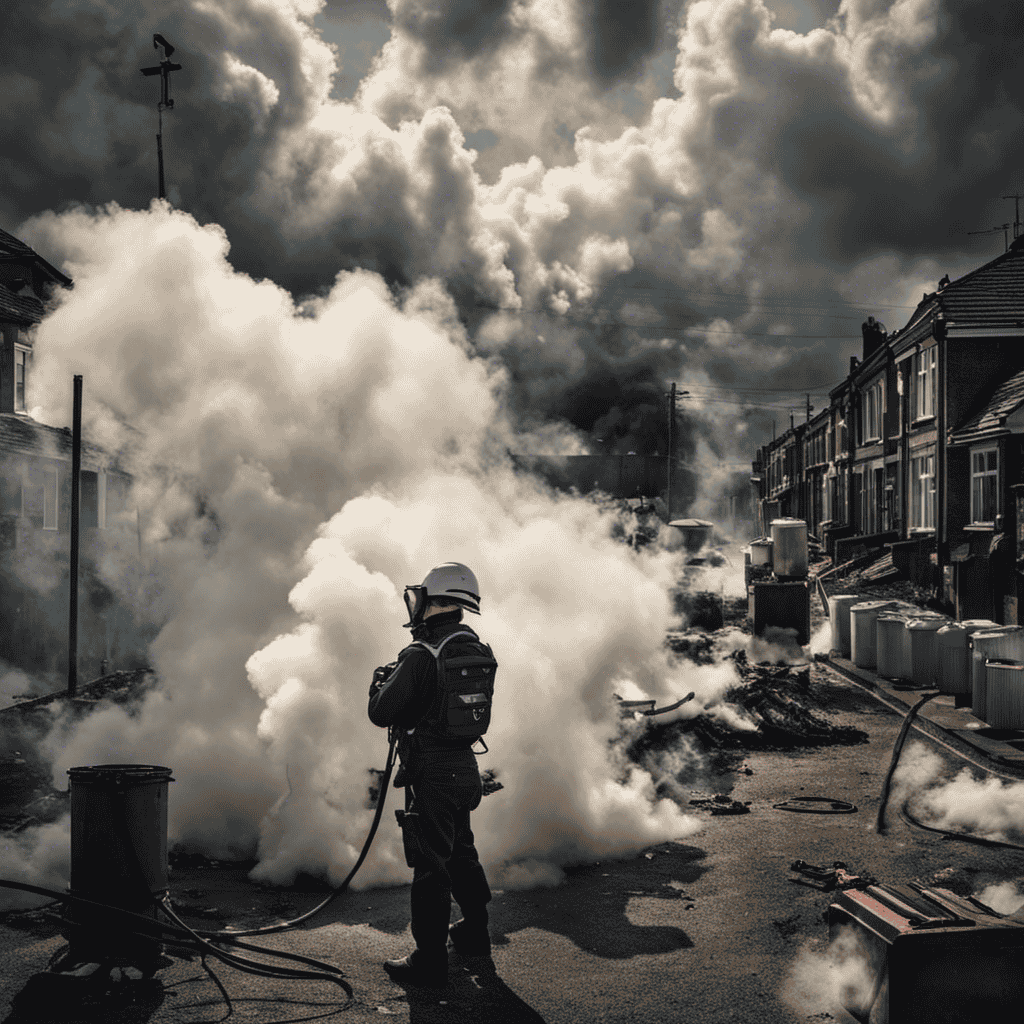As a well-informed consumer, I aim to ensure that the air purifier I select is both safe and efficient.
So, which air purifier does not produce ozone?
In this article, I will explore the dangers of ozone-producing air purifiers and provide key features to look for in ozone-free options.
By understanding the health effects of ozone and learning how to determine if an air purifier produces it, we can make an informed decision to maintain a healthy and clean indoor environment.
Key Takeaways
- Ozone-producing air purifiers can cause respiratory issues and decrease lung function.
- Ozone inhalation can increase susceptibility to respiratory infections.
- Ozone pollution can trigger cardiovascular problems and increase the risk of heart attacks and strokes.
- Ozone-free air purifiers, such as those offered by Dyson, Blueair, Honeywell, and Coway, effectively remove pollutants without emitting harmful ozone.
The Dangers of Ozone-Producing Air Purifiers
Ozone-producing air purifiers can be harmful to our health. The dangers of ozone exposure should not be underestimated.
Ozone, a molecule composed of three oxygen atoms, is a highly reactive gas that can cause respiratory issues when inhaled. Studies have shown that long-term exposure to ozone can lead to a range of health problems, including lung inflammation, decreased lung function, and increased susceptibility to respiratory infections.
Additionally, ozone can react with other substances in the air to form harmful byproducts, such as formaldehyde and ultrafine particles, which can further aggravate respiratory issues. It is important to consider the potential long-term effects of ozone inhalation before using an air purifier that produces ozone.
Choosing an air purifier that does not produce ozone can help protect our health and ensure clean indoor air quality.
Understanding Ozone and Its Health Effects
When it comes to air purifiers, it’s important to consider the potential health risks associated with ozone. Ozone, a gas composed of three oxygen atoms, can cause respiratory issues and worsen existing conditions such as asthma or bronchitis.
However, there are ozone-free air purifiers available that can effectively clean the air without releasing this harmful gas.
Ozone’s Health Risks
To protect your health, it’s important to be aware of the risks associated with high levels of ozone. Ozone, a gas composed of three oxygen atoms, is a major component of air pollution. It is formed when pollutants emitted by cars, power plants, and industrial facilities react with sunlight.
Here are some key points about ozone’s health risks:
- Ozone can cause respiratory problems such as coughing, throat irritation, and difficulty breathing.
- Prolonged exposure to high levels of ozone can worsen existing respiratory conditions such as asthma and bronchitis.
- Ozone can also trigger cardiovascular problems and increase the risk of heart attacks and strokes.
- Ozone pollution can have detrimental effects on the environment, including damage to crops and forests.
- When choosing air purifiers, opt for ozone-free alternatives such as HEPA filters and activated carbon filters to ensure clean and healthy indoor air.
Remember to stay informed and take necessary precautions to minimize your exposure to ozone and protect your health.
Ozone-Free Air Purifiers
If you want cleaner indoor air, consider using an air purifier that does not emit ozone. Ozone-free air purifiers are designed to remove pollutants from the air without producing harmful ozone as a byproduct. These purifiers use advanced filtration systems to capture particles, allergens, and pollutants, ensuring that the air you breathe is clean and healthy.
There are several ozone-free air purifier brands available in the market that prioritize your health and well-being. These brands include Dyson, Blueair, Honeywell, and Coway. Each of these brands offers different models with various features and capabilities to suit your specific needs.
The benefits of using ozone-free air purifiers are numerous. Firstly, they provide effective filtration, removing particles as small as 0.3 microns from the air. This helps reduce the presence of allergens, such as dust mites, pollen, and pet dander, which can trigger allergies and asthma. Additionally, these purifiers can help eliminate odors and harmful volatile organic compounds (VOCs) from the air, improving the overall indoor air quality. Lastly, ozone-free air purifiers are safe to use and do not produce ozone, ensuring that you and your family can breathe easy without any potential health risks associated with ozone exposure.
| Ozone-Free Air Purifier Brands | Benefits |
|---|---|
| Dyson | Effective filtration, odor elimination, safe to use |
| Blueair | Allergen reduction, VOC removal, improved air quality |
| Honeywell | Dust and pet dander removal, odor reduction, ozone-free |
| Coway | Particle filtration, allergy relief, safe for asthmatics |
Key Features to Look for in Ozone-Free Air Purifiers
One important feature to look for in ozone-free air purifiers is a HEPA filter. HEPA filters are designed to capture particles as small as 0.3 microns, including dust, pollen, pet dander, and even some bacteria and viruses.
Here are some key features to consider when comparing air purifiers:
- Activated carbon filter: This filter helps to remove odors, gases, and volatile organic compounds (VOCs) from the air.
- Pre-filter: A pre-filter captures larger particles like hair and dust, prolonging the life of the main filter.
- Air quality sensor: Some air purifiers have sensors that detect the level of pollutants in the air and adjust the filtration speed accordingly.
- Noise level: Consider the noise level of the purifier, especially if you plan to use it in your bedroom or office.
- Coverage area: Check the square footage that the purifier can effectively clean to ensure it is suitable for your space.
Having clean air is crucial for our well-being, as it can reduce the risk of respiratory problems and allergies. By choosing an ozone-free air purifier with a HEPA filter, you can ensure that you are breathing in clean and healthy air.
Top Ozone-Free Air Purifiers on the Market
When it comes to choosing an air purifier, one important factor to consider is whether it is ozone-free.
Ozone, a molecule composed of three oxygen atoms, can be harmful to human health, especially when present in high concentrations indoors.
Ozone-free air purifiers offer a safer alternative, providing clean and healthy air without the potential risks associated with ozone exposure.
Ozone-Free Air Purifiers
You should consider purchasing an ozone-free air purifier to ensure cleaner air in your home. Ozone-free air purifiers are designed to remove pollutants from the air without producing harmful ozone. Here are some key factors to consider when choosing the right ozone-free air purifier:
-
Efficiency: Look for air purifiers that have high CADR (Clean Air Delivery Rate) ratings, indicating their ability to remove pollutants effectively.
-
Filter type: HEPA (High-Efficiency Particulate Air) filters are highly recommended for their ability to capture small particles, including allergens and pollutants.
-
Noise level: Consider air purifiers that operate quietly, especially if you plan to use them in bedrooms or other noise-sensitive areas.
-
Size and coverage area: Ensure the air purifier is suitable for the size of the room you intend to use it in.
-
Additional features: Some air purifiers come with features like air quality sensors, timers, and remote controls, which can enhance convenience and effectiveness.
Health Benefits of Ozone-Free Purifiers
Consider the health benefits of using an ozone-free air purifier. These purifiers are designed to filter out harmful particles and pollutants without emitting ozone, a known respiratory irritant. Clean air is essential for maintaining good health, especially indoors where we spend most of our time. Indoor air quality plays a crucial role in our overall well-being.
Ozone-free air purifiers effectively remove allergens like pollen, dust mites, pet dander, and mold spores. By doing so, they reduce the risk of allergies and respiratory issues. These purifiers can also help alleviate symptoms of asthma and other respiratory conditions by improving indoor air quality.
Investing in an ozone-free air purifier is a wise decision for promoting a healthy living environment.
How to Determine if an Air Purifier Produces Ozone
To determine if an air purifier produces ozone, you can check the product specifications or look for labels indicating ozone-free operation. Ozone can be harmful to human health, so it is important to choose an air purifier that does not emit this gas.
Here are some ways to determine if an air purifier produces ozone:
-
Check the product specifications: Look for information regarding ozone production in the product manual or on the manufacturer’s website.
-
Look for labels: Some air purifiers are certified as ozone-free by organizations such as the California Air Resources Board (CARB) or the Association of Home Appliance Manufacturers (AHAM).
-
Conduct independent testing: You can test the air purifier yourself using an ozone detector or by sending air samples to a laboratory for analysis.
-
Read customer reviews: Look for feedback from other users regarding ozone production.
-
Consult with experts: Seek advice from professionals in the field of indoor air quality or environmental health.
Tips for Maintaining an Ozone-Free Air Purifier
To maintain an ozone-free air purifier, remember to regularly clean or replace the filters and follow the manufacturer’s instructions for maintenance. Cleaning the filters is essential as they can become clogged with dust, pollen, and other contaminants over time. This not only reduces the efficiency of the purifier but also compromises the quality of air purification. Additionally, following the manufacturer’s instructions is crucial to ensure proper functioning of the device.
There are some common misconceptions about ozone-free air purifiers. One of them is that they do not require any maintenance. This is incorrect, as all air purifiers, regardless of whether they produce ozone or not, need regular maintenance to keep them working effectively. Another misconception is that ozone-free air purifiers are less effective compared to ozone-generating ones. However, studies have shown that both types can provide effective air purification, and ozone-free purifiers are generally considered safer for indoor use.
Frequently Asked Questions
Are There Any Air Purifiers That Produce a Small Amount of Ozone, but Are Still Considered Safe?
Yes, there are air purifiers with HEPA filters that produce a small amount of ozone but are still considered safe. However, the benefits of using ozone-free air purifiers outweigh any potential risks associated with ozone production.
Can Ozone-Free Air Purifiers Effectively Remove Allergens and Pollutants From the Air?
Do ozone-free air purifiers effectively remove allergens and pollutants? How do they compare to ozone-producing purifiers? Studies show that ozone-free purifiers can effectively remove allergens and pollutants, making them a safe and efficient choice.
What Are the Potential Health Risks Associated With Long-Term Exposure to Ozone?
Potential health risks associated with long-term exposure to ozone include respiratory issues, such as asthma exacerbation and lung inflammation. It can also contribute to cardiovascular problems and decreased lung function.
Are There Any Specific Certifications or Labels to Look for When Purchasing an Ozone-Free Air Purifier?
When purchasing an air purifier, it is important to look for certifications and labels that indicate it is ozone-free. These indicate that the purifier does not produce ozone, which can have potential health risks.
How Often Should the Filters in an Ozone-Free Air Purifier Be Replaced?
Filters in an ozone-free air purifier should be replaced regularly to maintain optimal performance. By following manufacturer’s recommendations, you can ensure that the purifier continues to effectively remove pollutants and improve indoor air quality.
Does the Presence of Carbon Black in Air Purifiers Cause Ozone Production?
The presence of carbon black in air purifiers has been a concern for ozone production. The carbon black air purifier concept has raised questions about its potential to create ozone as a byproduct. Research is ongoing to determine the extent of this issue and ensure that air purifiers are effectively improving indoor air quality.
Conclusion
In conclusion, it’s crucial to invest in an ozone-free air purifier to safeguard your health. The dangers of ozone-producing air purifiers cannot be overstated. By choosing an ozone-free option, you can protect yourself and your loved ones from the harmful effects of ozone exposure.
With the top ozone-free air purifiers readily available on the market today, it has never been easier to ensure clean and safe indoor air. Don’t take any chances with your health. Make the switch to an ozone-free air purifier today.










